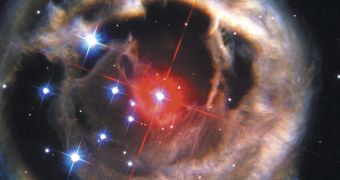A new research is trying to find our Sun's family tree throughout the complex history of the galaxy, by studying its chemical composition. Open clusters could also provide clues concerning the Sun's genealogy.
The team, led by Gayandhi De Silva, at the European Southern Observatory's Very Large Telescope (VLT) used the instrument's Ultraviolet and Visual Echelle Spectrograph (UVES) to look at three open star clusters in our galaxy.
They are more compact groups of stars that can count a few thousand stars bound together and are thought to have formed from the collapse of a giant molecular cloud of gas, up to 10 billion years.
"Open clusters are invaluable objects for tracing of the formation and evolution of the disk of our galaxy," De Silva said." The older clusters hold clues to the formation history of the galactic disk."
The Sun was also born in such a cluster, around 4.6 billion years ago, along with thousands of young stars. The star nursery resembled a grape, where each individual star was located close to each other in a cluster formation.
For now, the most compelling evidence for this model can be found in meteorites, in which traces of radioactive elements have been found. The radioactive decay of the iron-60 isotope was measured in many such meteorites and the presence of the isotope itself can only be explained as being the result of a large star exploding in a supernova.
The latest data produced by the VLD observations are confirming the fact that stars of the same cluster have similar compositions.
"The main result was that the member stars of each cluster shared the same chemical composition. Such chemical homogeneity is expected if all the stars are formed together within the same parent gas cloud," De Silva said.
What does this mean? De Silva believes this chemical resemblance to be an indication of the fact that the initial gas cloud where the stars formed was a homogeneous mix. This means that the present chemical composition of the stars coming from the same cluster must be roughly the same.
"The elemental abundances of these stars are preserved despite the star cluster being kinematically dispersed. With detailed high accuracy measurements we should be able to find the chemical signatures of dispersed clusters that are otherwise unidentifiable," De Silva said.
Finding stars with a similar composition to that of our Sun and a matching age could reveal a real family tree of our benefactor.

 14 DAY TRIAL //
14 DAY TRIAL //